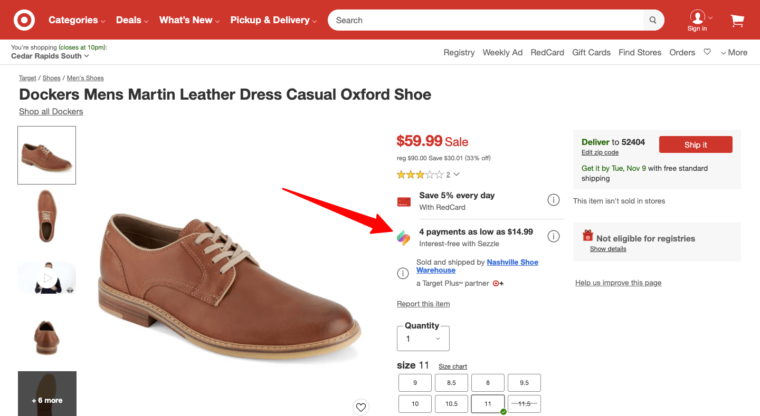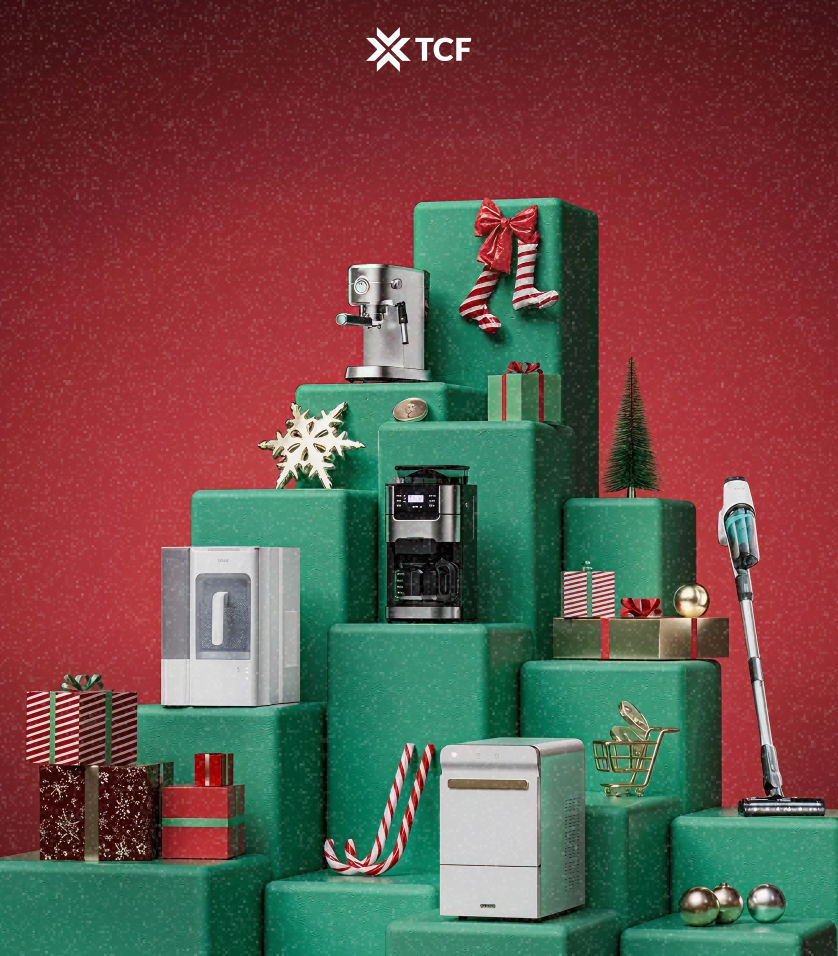The holidays are here, and with them comes the annual surge of online shoppers hunting for the perfect gifts. For ecommerce brands, this season is a golden opportunity to wow customers in ways they’ll remember long after the decorations come down. But what’s the secret to standing out in the busiest shopping season of the year?
With consumer expectations evolving and technology advancing swiftly, staying ahead of the curve is more important than ever.
Let’s take a closer look at what’s driving the season’s buzz and how brands can keep up with the evolving demands of holiday shoppers.
[[cta5]]
Top Ecommerce Holiday Trends You Can’t Afford to Miss in 2025
1. The Death of the Big Weekend Sale
Black Friday and Cyber Monday no longer own the season. Shoppers are spreading their spending across eight to ten weeks, jumping on early drops, mid-season flash sales, and post-Christmas deals.
Nearly half of global shoppers want promotions before October even ends, so brands that wait until Thanksgiving weekend are showing up late to the game. Major retailers like Amazon and Walmart now run “Holiday Kickoff” events weeks in advance, setting the tone for everyone else.
To stay competitive:
- Start early, plan smarter. Launch teaser sales in October, then roll out discounts in waves instead of one big push.
- Keep momentum steady. Follow early offers with new bundles, gift guides, or free-shipping weekends to reengage buyers.
- Stretch your funnel. Capture early visitors for retargeting and convert them later with December-only promos.
The two-day frenzy is gone. The winners in 2025 are the brands that pace themselves and treat the entire holiday season as a sustained campaign.
2. Social Shopping Meets AI
TikTok Shop might’ve redefined discovery, but 2025 is the year social and AI fully collide. ChatGPT’s new shopping feature now lets users find and compare gifts in conversation form. No tabs, no filters, no endless scrolling. People can type, “Can you find me a hydrating skincare set under $60 that delivers before Christmas?” and get curated options in seconds.
For brands, this changes everything. Product visibility now depends on how well your listings and descriptions match natural, question-based searches. Think conversational SEO.
Here’s how to adapt:
- Optimize for AI discovery. Rewrite product copy with real questions shoppers would ask, not stiff keyword blocks.
- Be available where people talk. Integrate your store with chat-driven tools (ChatGPT plugins, Messenger shops, TikTok Shop bots).
- Add personality to responses. Consumers trust recommendations that sound human.
Social feeds and AI chats are merging into the new digital mall. The brands that show up naturally in those conversations will win attention before shoppers even hit “search.”
3. Creator-Driven Discovery
Creators have officially replaced ads as the front door to ecommerce. In 2025, shoppers start on TikTok, YouTube, or Instagram, watching people they trust try products in real time.
This shift isn’t about influence, it’s about curation. Creators are now running storefronts, launching co-branded drops, and hosting live shopping events that feel like hangouts. Their followers treat them like personal shoppers with better taste and faster links.

Some examples lighting up this year’s feeds: fashion influencers doing “12 Days of Holiday Fits” live streams with affiliate links, tech creators reviewing viral gadgets on TikTok Shop, beauty vloggers bundling limited-edition kits through their Amazon Storefronts.
To tap into creator-driven discovery:
- Partner early. Send product samples before Black Friday so content lands when shoppers start hunting.
- Give creators freedom. Authenticity drives clicks, scripted promos don’t.
- Make it shoppable. Provide custom links, codes, or affiliate storefronts to track conversions directly.
- Invest in micro-creators. Smaller communities mean higher trust and niche targeting at a lower cost.
Creators aren’t amplifying your message, now they are the message. The smartest brands in 2025 let creators own the spotlight while they focus on making it effortless to buy.
4. The Return of Physical Touchpoints
After years of online fatigue, shoppers are craving real-world experiences again. In 2025, even the most digital-first brands are going tactile: opening pop-ups, hosting gift workshops, or turning stores into live-stream studios. The goal being the connection.
Pop-ups are popping off because they do what a website can’t: let people feel the product. Brands like Glossier, Gymshark, and small indie labels are using short-term holiday spaces to test markets, film content, and fulfill local orders. A TikTok live from your own showroom beats a generic ad every time.
How to bring the “physical” back into your holiday mix:
- Turn stores into content hubs. Stream demos, host micro-events, or let influencers shop live.
- Add local pickup or same-day delivery. Convenience is the real luxury now.
- Make it memorable. A cup of cocoa and free gift wrapping can go further than a discount.
Offline is becoming the new trust signal. In a season packed with digital noise, a face-to-face moment feels rare, and that’s exactly what makes it sell.
5. AI Everywhere, But Smarter
AI isn’t a shiny new toy anymore. In 2025, it’s running ads, predicting trends, managing inventory, and even writing emails while you sleep. The difference this year is how brands are using it: less hype, more precision.
Tools like Meta’s Advantage+, Google Performance Max, and TikTok Symphony now automate everything from creative testing to audience targeting. Generative AI helps teams churn out hundreds of ad variations, while predictive algorithms decide which ones actually deserve your budget.
The biggest shift this year is the rise of AI agents: autonomous systems that manage tasks end to end. Think of them as digital coworkers trained for one role, like ad optimization or inventory control. A few examples already in play:
- Marketing agents that auto-launch campaigns across Meta, TikTok, and Google, then pause underperforming ones without waiting for human review.
- Inventory agents predicting sellouts weeks in advance by analyzing order data and regional demand, rerouting stock before shortages hit.
- Customer experience agents handling 70% of holiday inquiries through AI chat: solving shipping, refund, or product questions instantly without breaking tone.
- Creative copilots using brand-approved style libraries to produce ad visuals and copy that actually sound like you.
But with that power comes respon.. no, sameness. Scroll through your feed, and half the ads feel like they came from the same machine. The standout campaigns in 2025 are the ones that add human flair to AI efficiency: humor, surprise, warmth.
How to use AI without losing personality:
- Automate at scale. Feed your AI tools clear data sets and let them generate ad variations, audience segments, and pricing updates daily.
- Train it on your brand voice. Build a small library of approved copy and visuals so your AI output sounds consistent.
- Integrate systems. Sync marketing, fulfillment, and support tools so your AI can respond to real inventory and delivery data.
- Audit and adjust. Set aside time each week to review what AI produces. Keep what performs, tweak what feels robotic.
AI runs the engine, but your voice is the steering wheel. The brands getting it right this holiday season are the ones driving, not just riding along.
6. Buy Now, Pay Later > Plan Now, Spend Wisely
BNPL has officially grown up. What started as a way to soften checkout guilt is now a full-blown financial planning tool. Shoppers in 2025 are using it to control their budgets.
Platforms like Klarna, Affirm, and PayPal Pay Later now come with budgeting dashboards that show payment timelines, interest-free plans, and spending summaries. Klarna even added “Smart Budget” reminders that alert users before payments overlap with other bills. For cost-conscious shoppers, that kind of clarity matters more than another discount code.

The impact for brands is massive: shoppers who use BNPL spend more per order, but they’re also choosier. Transparency, flexibility, and trust now drive conversions as much as price.
How to make BNPL work harder this holiday season:
- Highlight it early. Mention payment options on product pages, not at checkout especially for high-ticket gifts.
- Promote it as empowerment. Frame BNPL as a way to plan responsibly, not to splurge.
- Offer choice. Include multiple BNPL providers so customers can pick what fits their financial setup.
- Stay transparent. No hidden fees, no fine print. Shoppers in 2025 will call you out fast.
Flexible payments have evolved from a perk into a loyalty driver. The brands that treat them as part of financial wellness, not temptation, will earn both conversions and long-term trust.
7. Commerce Without Borders
In 2025, a customer might see a product in a TikTok haul, test it in a local pop-up, buy it through a chatbot, and reorder it from their smartwatch. The path to purchase is now a loop, not a funnel.
Retailers are finally catching up. Unified commerce platforms connect social, site, and store data so every click, scan, and swipe feeds the same system. Inventory syncs in real time, loyalty points work everywhere, and customer support agents (human or AI) can see full purchase history no matter how the order started.
How to keep up with borderless shopping behavior:
- Unify your data. Make sure your CRM, POS, and ecommerce platforms share one customer view with no blind spots between online and offline.
- Be everywhere that converts. Sell on TikTok Shop, Amazon, and your own store, but keep pricing and stock consistent across all.
- Use proximity as a strategy. Route orders to the nearest warehouse or store for faster delivery and lower costs.
- Track the full journey. Attribute conversions to every touchpoint, from the first scroll to the final scan.
Shoppers don’t see borders anymore, and neither should you. Treat every interaction on any platform as part of the same experience.
8. The Self-Gifting Economy
Holiday shopping used to be all about giving. In 2025, it’s just as much about treating yourself. Self-gifting is now a new category.
Retailers are seeing shoppers add one “for me” item to almost every order, from limited-edition sneakers to luxury skincare sets. Beauty, fashion, and tech brands are leaning into it with messaging built around self-care, personal rewards, and end-of-year upgrades.

To tap into the self-gifting wave:
- Design dual campaigns. Run separate creatives for “gift for them” and “treat for you” audiences.
- Bundle it smartly. Pair bestsellers with a small self-care extra (like a mini candle or pouch) to nudge impulse buys.
- Use email segmentation. Target returning customers with “Your holiday treat awaits” subject lines and loyalty-member exclusives.
- Add personalization. Use AI to recommend items based on past purchases and browsing habits. It makes the “me gift” feel earned.
Shoppers want to celebrate themselves too. The brands making that feel normal and rewarding are turning one-time buyers into long-term fans.
9. Value-First Shopping
Inflation didn’t kill holiday spending, it changed its logic. Shoppers in 2025 are mixing luxury and thrift with zero shame splurging on what matters, saving everywhere else. The new motto: premium where it counts, practical everywhere else.
Adobe data shows that 76% of consumers are stacking discounts across multiple platforms, using browser extensions, cashback apps, and loyalty points in a single checkout. Refurbished products are also having a moment: electronics resale platforms report double-digit growth, and “like-new” categories are now common in holiday gift guides. Shoppers care less about the logo, more about the longevity.
What this means for brands: loyalty is no longer guaranteed by name, but by value clarity. If two products look equal, the one that proves its worth through reviews, guarantees, or total cost transparency wins.
Here’s how to meet the value-first mindset head-on:
- Layer deals. Combine bundle pricing, free shipping, and loyalty rewards to create obvious savings.
- Add “refurbished” or “renewed” lines. Make sustainability feel smart.
- Lead with proof. Highlight product lifespan, repairability, or cost per use directly in copy.
- Reward the frugal. Offer extra perks for returning customers who buy during sale windows or trade in old products.
The 2025 shopper is strategic. They’ll pay top dollar for quality, but they want receipts to back the promise.
10. The Great Creative Reset
After two years of AI-generated sameness, 2025 has officially become the year of creative rebellion. Every feed, ad, and campaign looks too polished, and shoppers are tuning it out. The brands breaking through this noise are doing it with imperfection, personality, and real people again.
Consumers are gravitating toward content that feels made by humans. Lo-fi videos, behind-the-scenes clips, handwritten notes in orders, all the small touches that remind people there’s a heartbeat behind the brand. Even AI is being used differently now: not to mass-produce, but to prototype ideas faster so creators can refine them with emotion and context.
Here’s how brands are embracing the reset:
- Go unfiltered. Shoot short, scrappy clips on phones, not sets. Test storytelling before scaling production.
- Mix AI with instinct. Use generative tools to brainstorm visuals or copy, but let real creatives finalize tone, flow, and nuance.
- Make creators your studio. Co-create content with influencers or employees instead of outsourcing campaigns to agencies.
- Bring humanity into automation. Use AI to deliver personalization, then layer it with authentic messaging that sounds like a person, not a prompt.
Perfection used to sell. In 2025, personality does. Creativity finally feels human again, and that’s exactly what audiences have been waiting for.
Challenges to Watch Out for This Holiday Season
As exciting as the holiday season is for e-commerce, it’s not without its hurdles. Businesses must navigate a maze of challenges to ensure their campaigns run smoothly and deliver results. Here are some key obstacles to anticipate and strategies to overcome them:
Ad Fatigue and Rising Costs
Every brand is running performance campaigns earlier and for longer, driving CPMs and CPCs through the roof. By December, audiences are tired and overexposed.
Shift part of your budget to organic discovery: creator content, email, and owned channels. Test new hooks weekly instead of recycling the same ads all season.
AI Overload
Consumers can spot generic AI-generated content instantly. The brands that over-automate are losing engagement and trust fast.
Use AI for speed, not storytelling. Humanize every output, especially customer interactions and creative assets.
Inventory and Fulfillment Costs
Shipping prices are up again, and global carriers are prioritizing enterprise clients. Smaller brands are feeling the squeeze.
Diversify fulfillment through local micro-warehouses or partner with regional carriers. Promote early cutoffs and local pickup to manage expectations.
Privacy and Data Fatigue
Between cookie restrictions and consumer pushback, collecting and using data responsibly has never mattered more.
Focus on first-party data: email, SMS, and loyalty programs. Be clear about what you collect and why. Transparency earns more conversions than retargeting ever will.
The Last-Minute Rush, Reinvented
Procrastinators aren’t going away, they’ve just gone digital. Expect spikes in same-day orders and e-gift requests up until Christmas Eve.
Prepare automated “instant gift” options like digital cards, printable notes, or virtual bundles, and highlight cutoff reminders across every channel.
By anticipating these challenges and planning accordingly, businesses can ensure their holiday campaigns are as resilient as they are successful.
Conclusion
The holiday season doesn’t have to be all stress and chaos. Think of it as your brand’s time to shine. 2025 is all about staying ahead of the trends, keeping shoppers happy, and maybe having a little fun along the way. AI-powered discovery? Check. Creator-led commerce? Definitely. And yes, the self-gifting trend is still alive and thriving.
Sure, the season will bring its usual curveballs like sky-high ad costs, late shoppers, maybe a shipping scare or two, but with smart planning and quick pivots, you’ll stay ahead of it. Focus on what your customers value most, from smooth delivery to transparent pricing and campaigns that actually feel made for them.
At the end of the day, it’s all about creating an experience they’ll remember.
And hey, this year, maybe, just maybe, you won’t repeat the mistakes from Laaast Christmas!
[[cta5]]






.png)


.png)




